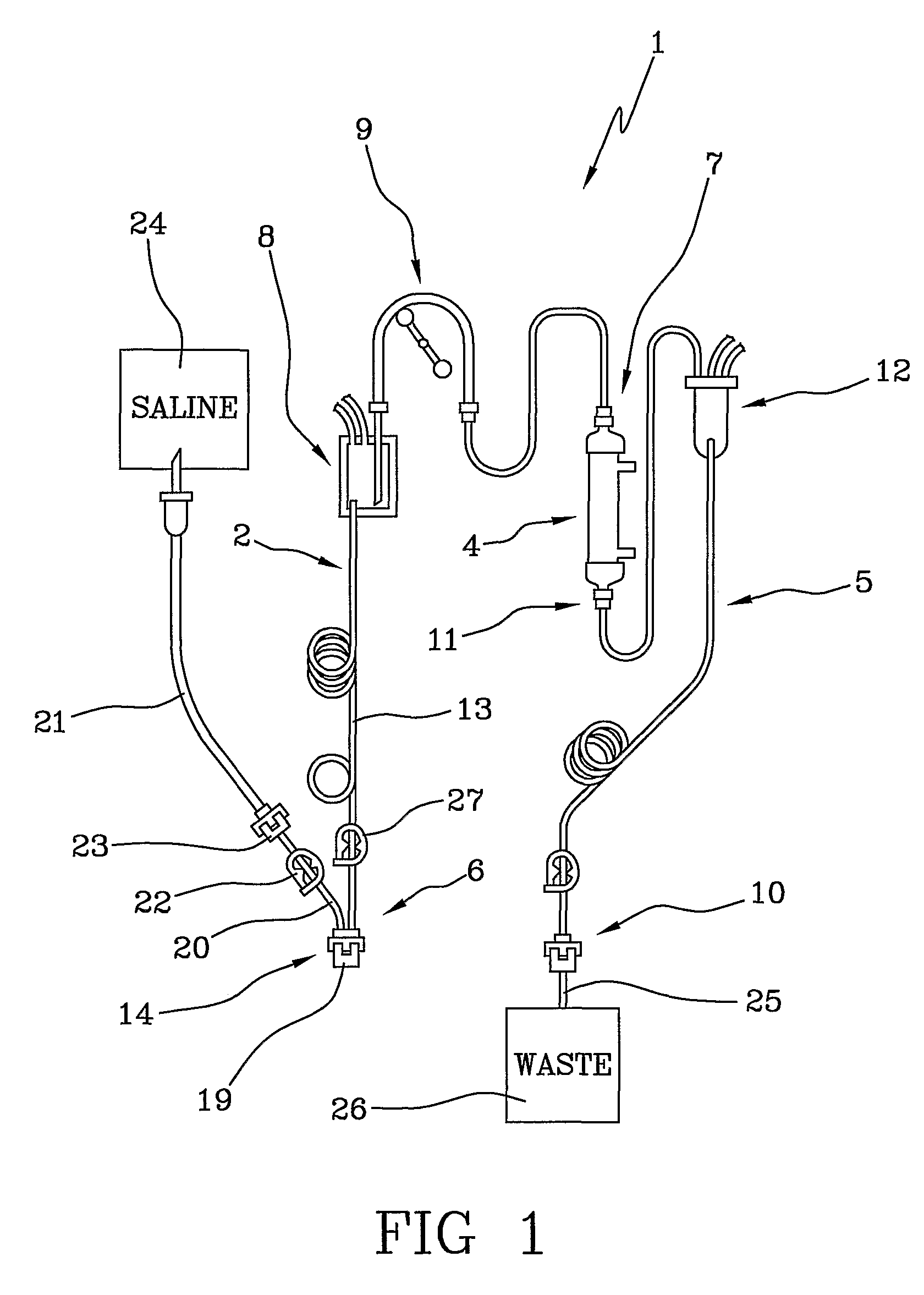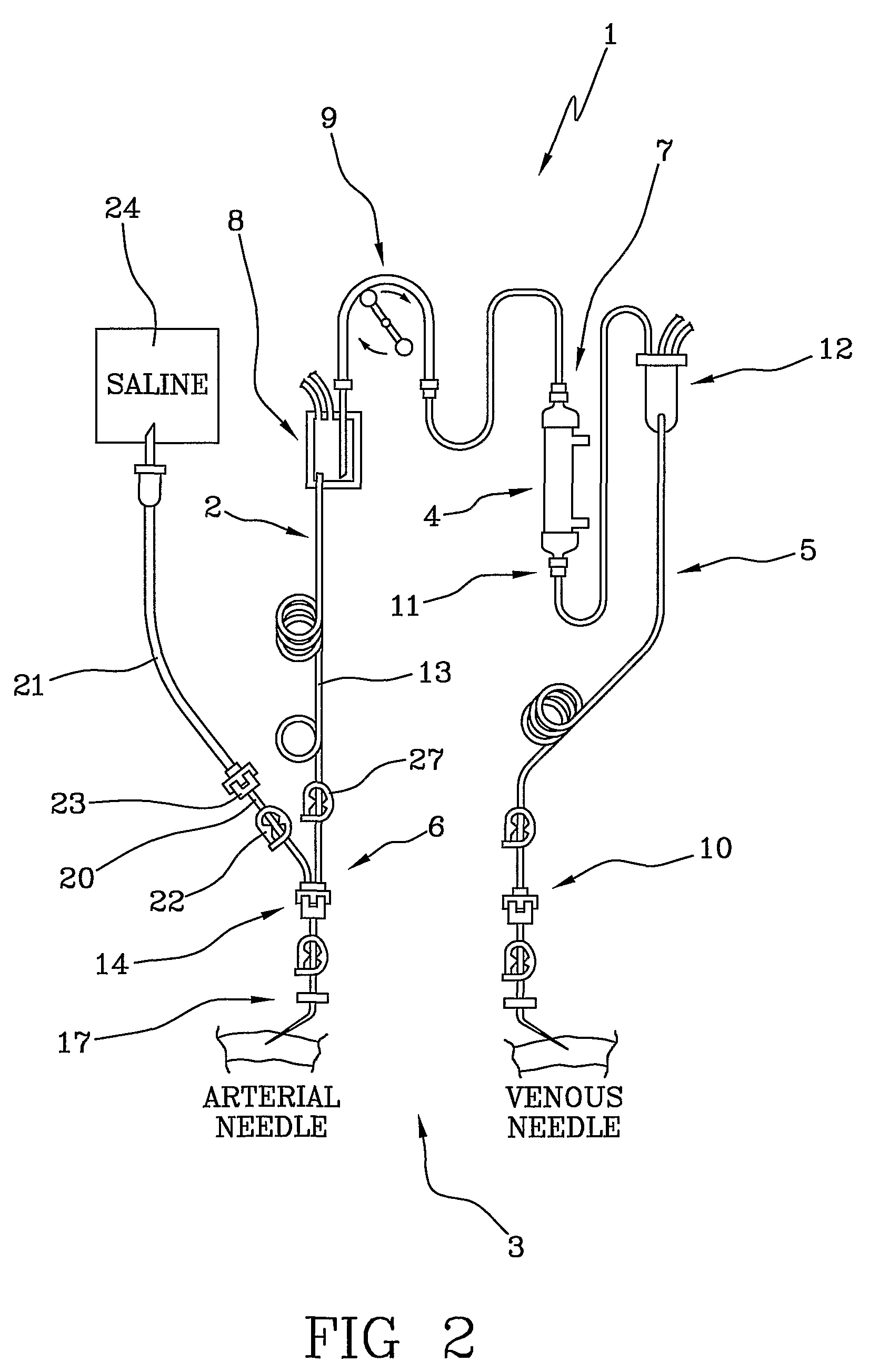Extracorporeal blood set
a blood set and extracorporeal technology, applied in the field of extracorporeal blood sets, can solve the problems of reducing the time needed, reducing the construction efficiency, and reducing the risk of contamination of the arterial line, so as to reduce the time needed, and reduce the construction efficiency. the effect of simple and economical
- Summary
- Abstract
- Description
- Claims
- Application Information
AI Technical Summary
Benefits of technology
Problems solved by technology
Method used
Image
Examples
Embodiment Construction
[0022]With reference to the above-cited figures of the drawings, 1 denotes in its entirety a blood set for an extracorporeal blood treatment (for example a dialysis treatment). The blood set 1, which is used for extracorporeal blood circulation, comprises an arterial line 2 which, during the treatment, removes the blood from a vascular access 3 of a patient (see FIG. 2) and leads it to a blood treatment device 4 (for example a dialyser), and a venous line 5 which takes the treated blood from an outlet of the treatment device 4 and returns it to the patient. The blood treatment device is, for example, a membrane exchanger provided with a semipermeable membrane which separates a blood compartment from a fluid compartment.
[0023]The arterial line 2 comprises a patient end 6 destined for connection with the vascular access 3 of the patient and a device end 7 destined for connection with the blood treatment device 4. The arterial line 2 comprises an arterial blood chamber 8 for air-liquid...
PUM
 Login to View More
Login to View More Abstract
Description
Claims
Application Information
 Login to View More
Login to View More - R&D
- Intellectual Property
- Life Sciences
- Materials
- Tech Scout
- Unparalleled Data Quality
- Higher Quality Content
- 60% Fewer Hallucinations
Browse by: Latest US Patents, China's latest patents, Technical Efficacy Thesaurus, Application Domain, Technology Topic, Popular Technical Reports.
© 2025 PatSnap. All rights reserved.Legal|Privacy policy|Modern Slavery Act Transparency Statement|Sitemap|About US| Contact US: help@patsnap.com



